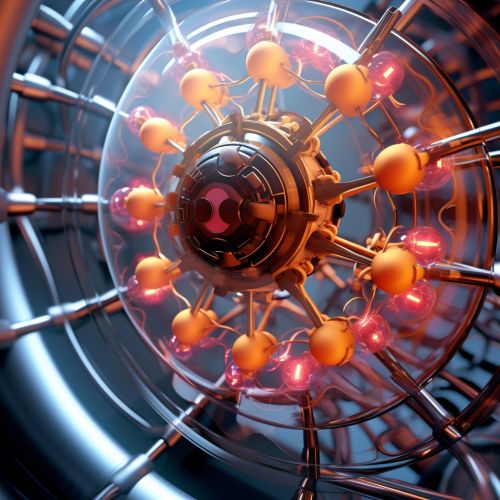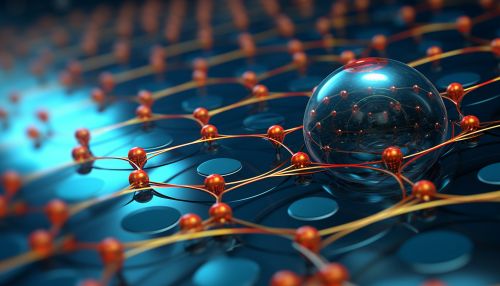Proton motive force
Introduction
The Proton motive force (PMF) is a fundamental aspect of bioenergetics, playing a pivotal role in the energy transduction mechanisms of living organisms. It is a form of energy generated by the translocation of protons (H+ ions) across a biological membrane. The PMF is primarily composed of two components: a chemical potential, due to the difference in proton concentration across the membrane, and an electrical potential, due to the charge difference across the membrane.


Generation of Proton Motive Force
The generation of PMF is typically facilitated by a class of proteins known as proton pumps. These proteins utilize energy from various sources, such as light or the breakdown of ATP (adenosine triphosphate), to actively transport protons across the membrane. This results in the creation of a proton gradient, with a higher concentration of protons on one side of the membrane compared to the other.
Components of Proton Motive Force
The PMF is composed of two primary components: the chemical potential (ΔpH) and the electrical potential (ΔΨ). The chemical potential is derived from the difference in proton concentration across the membrane, while the electrical potential is due to the charge difference across the membrane. Together, these two components constitute the PMF, which can be mathematically represented as Δp = ΔΨ - 59ΔpH.
Chemical Potential
The chemical potential of the PMF, denoted as ΔpH, is a result of the difference in proton concentration across the membrane. This gradient is established by proton pumps, which actively transport protons from the cytoplasmic side of the membrane to the extracellular side, creating a higher concentration of protons outside the cell.
Electrical Potential
The electrical potential of the PMF, denoted as ΔΨ, arises due to the charge difference across the membrane. As protons are positively charged, their active transport across the membrane results in a charge separation, with the outside of the membrane becoming more positively charged relative to the inside. This creates an electrical potential across the membrane.
Role in Energy Transduction
The PMF plays a crucial role in the energy transduction mechanisms of cells. It serves as a form of stored energy that can be harnessed to perform various cellular functions. One of the most significant roles of the PMF is in the process of oxidative phosphorylation, where it is used to drive the synthesis of ATP.
Oxidative Phosphorylation
In oxidative phosphorylation, the energy stored in the PMF is used to drive the synthesis of ATP from ADP and inorganic phosphate. This process is carried out by a protein complex known as ATP synthase, which couples the flow of protons down their concentration gradient to the phosphorylation of ADP.
Proton Motive Force in Bacteria
In bacteria, the PMF is essential for a variety of cellular processes, including nutrient uptake, motility, and the generation of ATP. The PMF is generated in bacteria through the process of electron transport, where electrons are transferred through a series of protein complexes, driving the active transport of protons across the membrane.
Proton Motive Force in Mitochondria
In mitochondria, the PMF is generated through a similar process of electron transport. However, the PMF in mitochondria is primarily used for the synthesis of ATP through oxidative phosphorylation. The generation and utilization of the PMF in mitochondria is a key aspect of cellular respiration, a process that is essential for the production of energy in eukaryotic cells.
